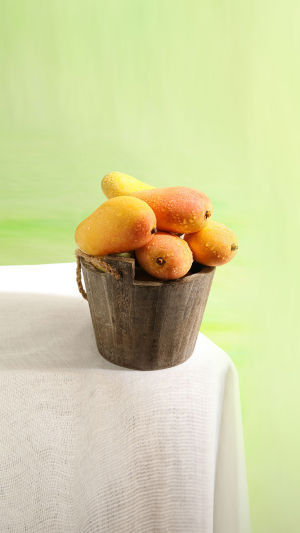Mangoes are a tropical delight that people all over the world enjoy. Their sweet and tangy flavor, along with vibrant colors, make them irresistible.
Whether eaten fresh, in smoothies, or as part of a dish, mangoes have earned a special place in our hearts. But what makes mangoes so magical? Let’s dive into their rich history and unique characteristics.
How To Cut And Dice A Mango
video by Clean & Delicious
<h3>Origin and Varieties of Mangoes</h3>
Mangoes come from the regions of <b>northwestern Myanmar, Bangladesh, and northeastern India</b>. These areas have been home to the <b>Mangifera indica tree</b> for thousands of years, which produces mangoes.
Over time, mangoes spread across the world, resulting in hundreds of varieties. Mangoes can vary in <b>size</b>, <b>shape</b>, <b>sweetness</b>, and <b>color</b>, ranging from <b>yellow</b> to <b>green</b> to <b>orange</b>. The mango is even the national fruit of <b>India</b>, <b>Bangladesh</b>, and <b>the Philippines</b>, and the mango tree is the national tree of <b>Bangladesh</b>.
<h3>How Mango Got Its Name</h3>
The word “mango” comes from the Portuguese word “<b>manga</b>,” which was borrowed from the Malay term “<b>mangga</b>.” The roots of the word can be traced back to <b>Tamil</b> and <b>Malayalam</b> languages, where “<b>mā</b>” means mango tree, and “<b>kāy</b>” means unripe fruit. The name reflects the fruit’s deep cultural significance in these regions.
<h3>Mango Trees: Tall and Majestic</h3>
Mango trees are impressive in size, growing up to <b>40 meters</b> tall with a wide crown. Some trees can even produce fruit for over <b>300 years</b>. The deep roots of the tree help it withstand different environments, ensuring its survival in tropical climates. The leaves of the mango tree are evergreen, changing colors from <b>pink</b> to <b>green</b> as they mature, while its small, fragrant white flowers eventually turn into the beloved mango fruit.
<h3>The Fruit of the Mango Tree</h3>
Mangoes vary in size and shape depending on the variety. They can range from small to large, with a weight between <b>140 grams</b> and <b>2 kilograms</b>. The skin is waxy and smooth, often changing colors from <b>green</b> to <b>yellow</b>, <b>orange</b>, or <b>red</b> as they ripen. When ready to eat, mangoes emit a sweet, resinous fragrance. Inside, they have a flat, oblong pit that can be difficult to remove, but the flesh is soft and juicy, making it perfect for snacking or cooking.
<h3>The Mango Lifecycle</h3>
Mangoes go through an interesting process before they are ready to harvest. After flowering, it takes <b>four to five months</b> for the fruit to ripen. In some cases, mango trees can produce <b>two crops</b> a year. Mangoes thrive in <b>tropical</b> and <b>subtropical climates</b>, but they can be grown in other regions with the right conditions.
<h3> Enjoy Mangoes, Enjoy Life</h3>
Mangoes are more than just delicious; they are full of history and offer various health benefits. From boosting immunity to aiding digestion, they’re a great addition to any diet. So, the next time you enjoy a mango, remember its journey from the tropical tree to your table. Lykkers, when was the last time you tasted a perfectly ripe mango?





